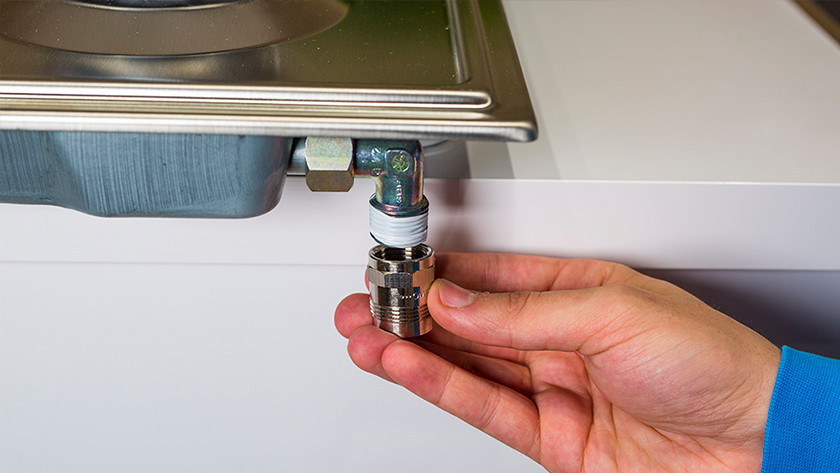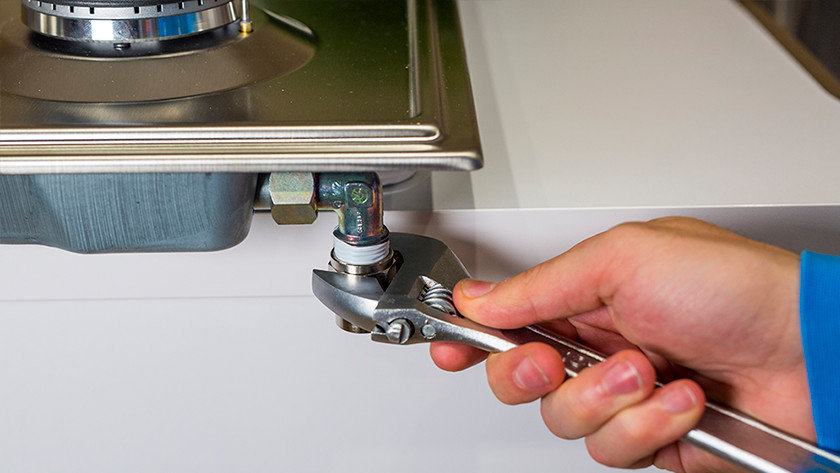
How do you connect a gas cooktop?
Before you start

Connecting gas is always at your own risk. If you're not that handy or you want to be sure it's connected properly, let someone with experience do it. If you want to get started yourself, follow these steps:
- Step 1: choose a stainless steel gas hose
- Step 2: close the gas valve
- Step 3: place a gas connector
- Step 4: attach the gas hose
- Step 5: connect the gas hose to the gas valve
- Step 6: check for leaks
Step 1: make sure you have the right gas hose

A stainless steel gas hose is required for built-in cooktops. In theory, you can use a rubber gas hose for a freestanding cooktop. We don't recommend that though. The heat from the cooktop dries out a rubber hose more quickly. You'll have to regularly check a rubber hose for leaks and replace it after 5 years. That's why you should choose a stainless steel gas hose for a freestanding cooktop.
Step 2: close the gas valve

The gas valve is located in your kitchen, near the gas connection. Turn the valve perpendicular to the pipe. Is it closed properly? You can now follow the steps below. You'll need a gas connector, gas tape, and a wrench.
Step 3: place the gas connector
-
Tape the end of the screw thread
-
Place the gas connector
-
Tighten the gas connector
To make sure the connection is a good fit, you use a gas connector. Wind a layer of gas tape around the screw thread of your stove clockwise. Attach the gas connector to the screw thread and use a wrench for the last bit. Make sure it's secured in place, but don't force it.
Step 4: Attach the gas hose

Attach the gas hose to the gas connector. Check whether your gas hose has a rubber ring. If it doesn't, apply a layer of tape to the gas connector first. Apply the tape clockwise. Now screw on the gas hose. Does your hose have a rubber ring? You can attach the gas hose without gas tape.
Step 5: tighten the gas hose on the gas valve

Finally, connect the gas hose to the gas connection in your kitchen. If your hose doesn't have a rubber ring, you can use the gas tape again. Apply a double layer of tape to the end of the gas valve. If you have a hose with a rubber ring, connect it without tape. Tighten the hose with the wrench.
Step 6: check for leaks

The gas hose is now attached to the gas valve and the cooktop. Before you get started with your brand new gas cooktop, you first have to check for leaks. Spread a mixture of soap and water on all connection points and carefully open the gas valve. Do you see any bubbles? That means the connection isn't gas tight. Turn off the gas and repeat the steps until you don't see any bubbles.





